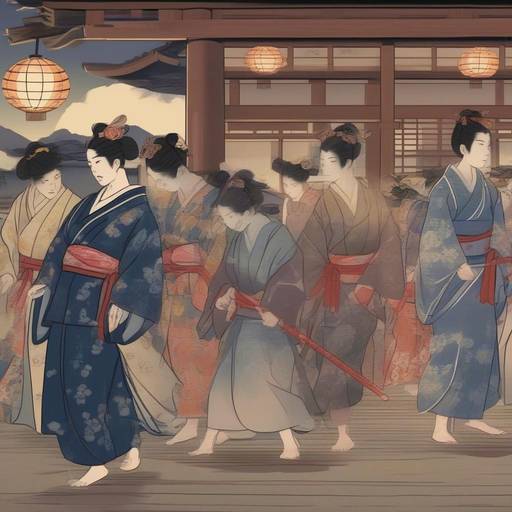
The Obon is an ancestral celebration that takes place in Japan during the summer. This event is an opportunity to honor and remember the ancestors, as well as to celebrate family unity. Throughout this article, you will discover the essential elements of this festival, from the traditional light of lanterns to the captivating Bon Odori dance and visits to cemeteries, all of which are framed in the rich history and current practices. We will explore this attractive celebration to understand its significance and relevance in Japanese culture.
Farolillos: History and Meaning
The "brushes" or "mothers" are symbolic elements used during the Obon to guide the spirits of the ancestors back to their homes. These lanterns, known as "bonbori", are made with washi and bamboo paper, with striking colors that represent joy and hope. The tradition of lightning flashlights during the Obon goes back centuries, when it is believed that the light attracted the souls of the deceased back home to meet with their loved ones.
In addition to serving as a spiritual guide, lanterns are a visual expression of respect and devotion to ancestors. The decoration of lanterns in homes and communities creates a welcoming and reverent atmosphere that reflects the spirit of the Obon. Farolillos can also carry written messages, transmitting tender thoughts and longings to loved ones who are no longer physically present.
Dance Bon Odori: Symbolism and Tradition
The Bon Odori Dance is an artistic and cultural manifestation that accompanies the Obon. Originally from the peasant regions of Japan, this traditional dance represents a form of gratitude and celebration for the blessings received from the ancestors. The Bon Odori is a collective experience in which everyone, regardless of their age or ability, can participate, thus fostering community connection.
The movements of the Bon Odori dance vary according to the regions, but they share a sense of grace and harmony that reflects the connection between the present and the past. Dances are often accompanied by live music, including taiko drums and shinobue flutes, creating a festive and animated atmosphere. The Bon Odori dance is an expression of gratitude, union and respect for the ancestors, thus consolidating the essence of the Obon.
Visits to Cemeteries: Reverence and Reflection
During the Obon, visits to the cemeteries are a significant act of reverence and respect for the ancestors. Families clean and decorate the graves of their loved ones, offering food and flowers as a sign of honor and gratitude. This gesture symbolizes the continuous connection with the ancestors, strengthening family ties and transmitting values of love and respect between generations.
In addition to adorning the graves, families perform ceremonies in memoriam to honor and remember their ancestors. These ceremonies include ritual practices, such as burning of incense and offerings, which symbolize recognition and gratitude for the blessings received from the deceased. The visits to cemeteries during the Obon are a moment of reflection and spiritual connection, thus renewing the sense of belonging and gratitude to the extended family.
The Obon is a deeply rooted celebration in Japanese culture, in which the light of streetlights, the Bon Odori dance and the visits to cemeteries are fundamental expressions of respect, gratitude and devotion to the ancestors. This holiday not only preserves spiritual and cultural heritage, but also strengthens family and community ties over time.
In the following sections, we will explore in greater detail the history and meaning of the Obon, as well as its relevance in contemporary society, providing multiple and revealing perspectives on this beautiful Japanese tradition. Join us on this journey to discover the richness and depth of the Obon and its associated practices.
